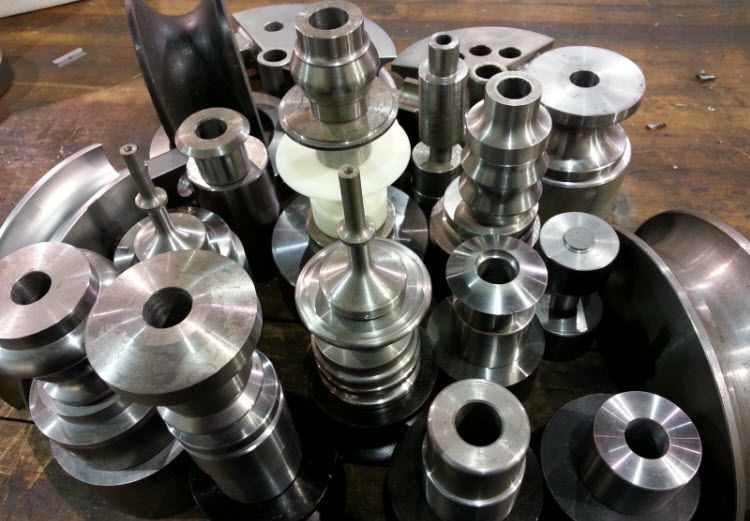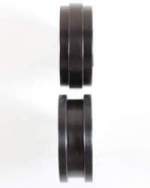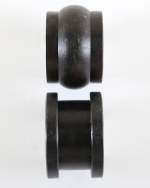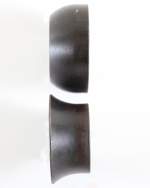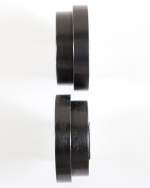Bead rollers are popular equipment used in manufacturing facilities to stiffen or shape metals. These bead rollers are electrically powered or operated by a traditional crank and wheel. Bead rollers depend on a variety of components for efficient operation. Roller dies are the most important components that contribute to the working efficiency of a bead roller. These dies are used to shape or stiffen metals in the desired form. Bead roller dies are referred from the size or shape of their beads. There are various types of standard and specific bead roller dies in the manufacturing industry. This post discusses some popular varieties of standard and operation-specific bead roller dies used by manufacturers.
Types of Bead Roller Dies Used in the Manufacturing Industry:
Following are some of the popular types of bead roller dies used in the manufacturing industry:
- Flat Bead Roller Dies: These roller dies are used in manual and electrical types of bead rollers. These roller dies can improve strength and design of any work piece. These dies are made from a variety of durable materials such as nylon and steel. These roller dies are flat and available in dimensions ranging from 1/8 ʺ to 1 ʺ.
- Round Bead Dies: These dies are used with manual or electrical bead rollers to roll a variety of profiles in metal projects. Made from metals such as steel, aluminum, nylon, these bead dies offer steady performance over the years. These dies feature ½ to 1ʺ wide beads, which can be used to stiffen 18 gauge mild steel and 16 gauge aluminum.
- Specialty Dies: These specialty dies are used in manual bead rollers. These dies can be used to stiffen and shape metals, or match panels in automotive restoration projects. Generally made from durable materials such as polyurethane, Delrin, and steel, these dies are available assorted shapes. Some of the popular shapes are skate pattern sets, 90 degrees die sets, body line sets, etc.
- Step Dies: These roller dies are used to step roll, and smoothly overlap two panels, or to strengthen metals such as steel and aluminum in a metal project. These dies are included in kits, or sold individually in varying bead lengths from 1/16 ʺ to ¼ ʺ or 45- degree orientation.
- Edge Bead Roller Dies: These dies are generally used to add strength, or to create a parallel design on the outer edge of a metal sheet. Used with manual and electric bead rollers, these dies are available in bead dimensions ranging from 1/8 ʺ to 1ʺ. They are made from durable materials such as Delrin and steel, which ensure long-term service.
- Tank Roll Sets: These roll sets are compatible with electrical, or manual bead rollers. These roll sets usually roll a radius on the ends of the tank for creating an airtight seal. These roll sets can be used to stiffen up to 18 gauge mild steel, or 16 gauge aluminum. These roll sets are manufactured from durable materials such as 4140 Chromopoly that ensures its long-term performance.
- Rotary Shear Roll Sets: These bead roller dies are used to turn an electric or manual bead roller into a shear that can cut up to 18 gauge mild steel, or 16 gauge aluminum. These bead roller die sets are machined with durable materials for long shelf lives.
- Spoiler Roll Sets: These bead roller dies can be used in electric or manual bead rollers to create a spoiler that can design and stiffen up 18 gauge mild steel, or 16 gauge aluminum. These roller dies provide dependable service due to their durable construction. Aluminum, steel, and nylon are few durable materials used to create these types of roll sets.
- 45 Degree Bead Dies: These roller dies are used in manual bead rollers to create 45 degree elevation that can shape or stiffen up any metal project. These roller dies are available in various bead dimensions from 1/8ʺ, 3/16ʺ, ¼ʺ, 5/16 ʺ, 3/8 ʺ and up to 1ʺ.
- 90 Degree Bead Dies: These dies are used in manual and electrical bead rollers to create 90-degree elevation that can be used to shape any metal project.
- Turning Dies: These dies are used for creating rounded edges on metal sheet panels. These dies can be made from precision steel and other durable metals to ensure long-term performance. These dies are used to handle up to 16 gauge mild steel.
- Edge Tipping Dies: These dies are used to sharpen 90-degree bends for cleaner edges, or to bend a flange.
- Forming Dies: These dies are machined from durable CR12 steel with 35HRC hardness. Available in various shapes, these dies are used to hem edges, create style lines, flanges, and offsets, channels, and contours.
- Rounding Over Dies: These dies are ideal for producing round or radiused edges on metal panels. These dies can be used with most types of bead rollers.
- Hemming Roll Sets: These dies are confused with tipping dies, however, they are not exactly the same. The upper roll has rounded edges, and are used to mark the metal, where flanges are located. The lower roll is soft, grooved, smooth, or hard.
These dies will enable you to bend, shape, strengthen and form metal sheets, and fabricate complex parts and panels. The choice of the die depends on two main factors – the type of metal and purpose of the project. If you are unable to make the right choice, it is always perfect to approach the die manufacturer, or a reliable fabrication engineer. They will not only guide you in the selection, but help you understand how each die will contribute to your project.

